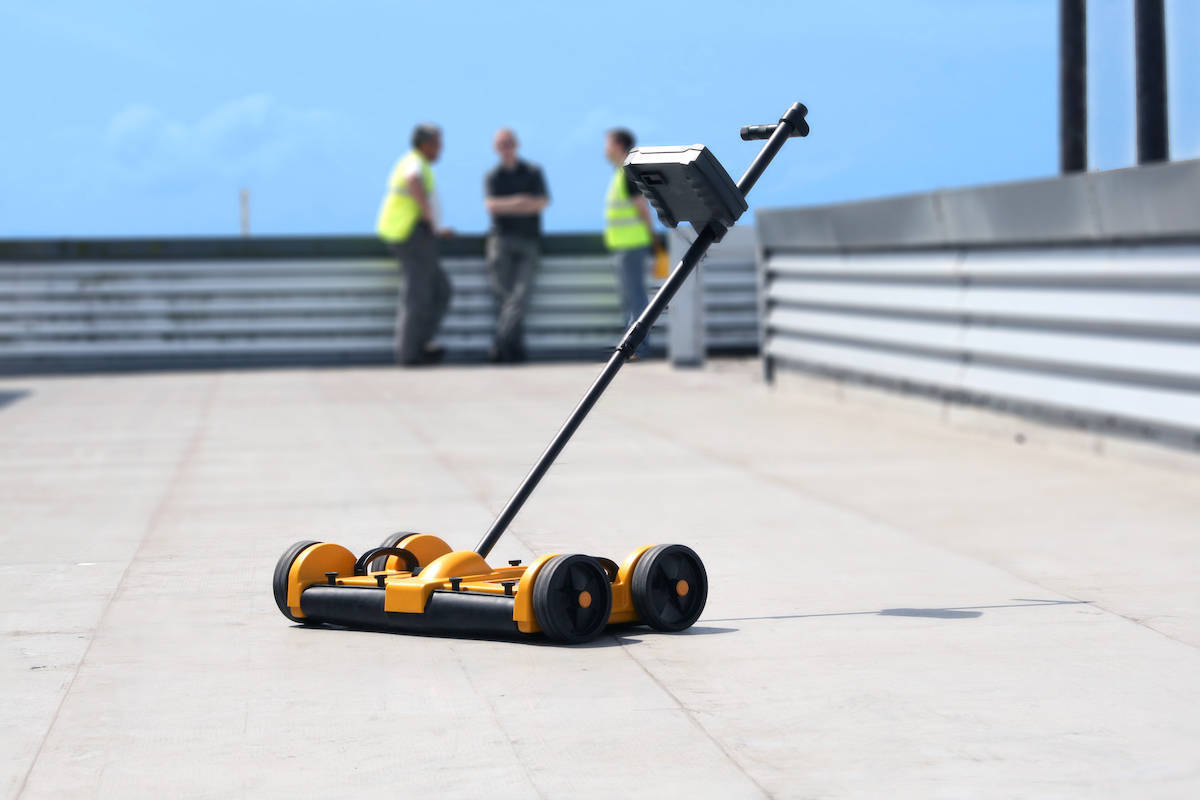
The Tramex Dec Scanner is a mobile non-destructive impedance scanner designed for the instant surveying of moisture conditions in flat roofing and waterproofing systems per ASTM D7954. The Dec Scanner roofing moisture meter detects and measures leaks within the roofing structure, is ideal for water leak detection in roofing materials and integrity testing, giving an instantaneous and clear indication of the roof moisture condition. The Dec Scanner is robust, easy to assemble, can be used in normal daylight hours, and is easy and safe to use with no regulatory restrictions or operating license required.
How to Assemble the Tramex DEC SCANNER
1. First, remove the base unit from the case by lifting with both grab handles.
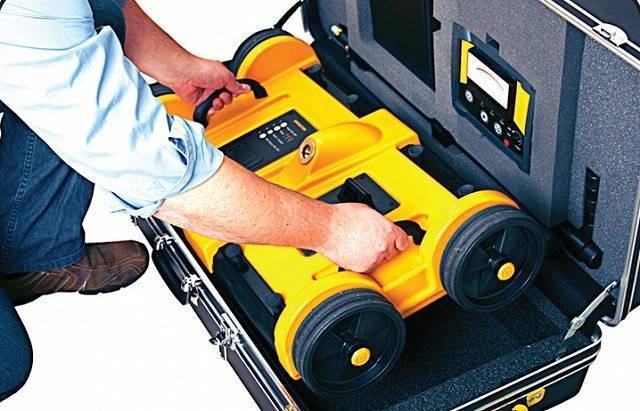
2. Then screw the threaded end of the handle into the Dec Scanner Base Unit and secure the upper half of the handle with the flip lock.
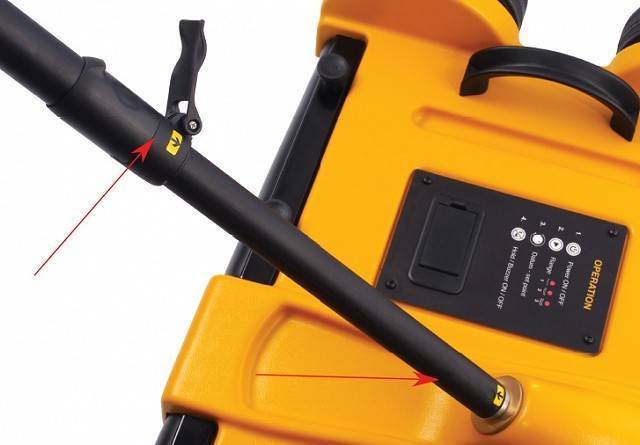
3. Mount the control panel to the telescopic handle and adjust the hand grip to suit.
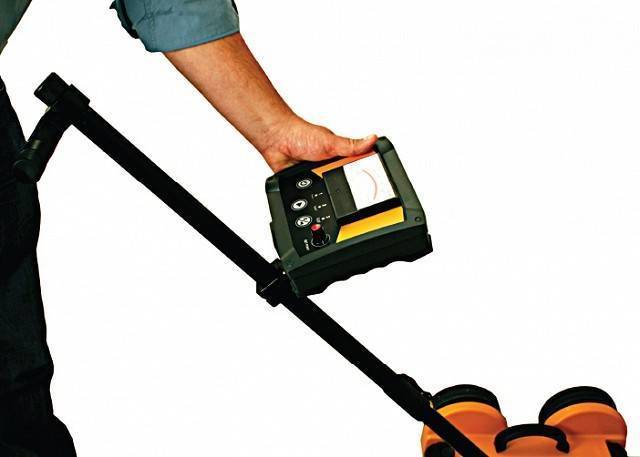
4. Before using the Dec Scanner, always ensure that the electrode mat on the bottom of the instrument is completely secured by making sure that all eight grip screws are fully tightened. Check batteries regularly. It is recommended to always carry spares.
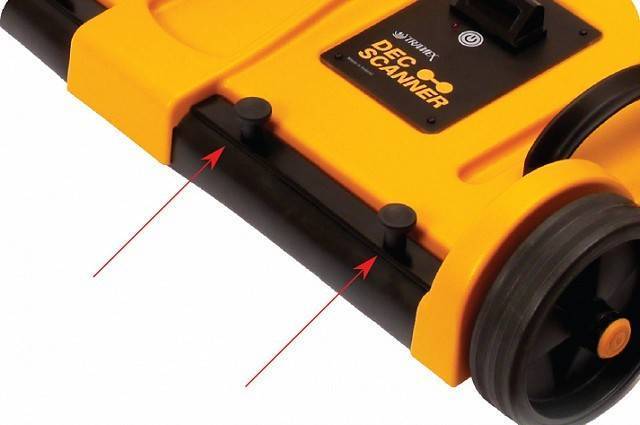
Powering On the Tramex DEC SCANNER
To power-on the instrument, first press the power button on the base unit. The red LED will light solidly to indicate good battery level.
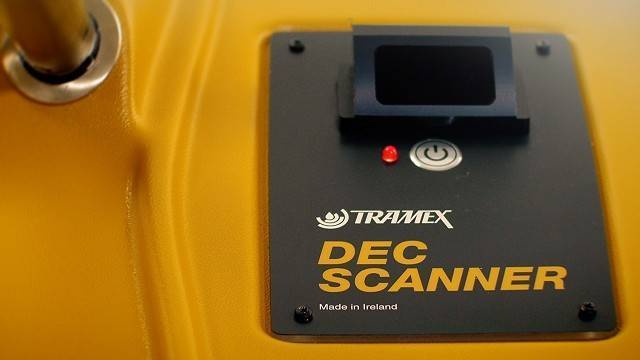
Then power-on the control panel.
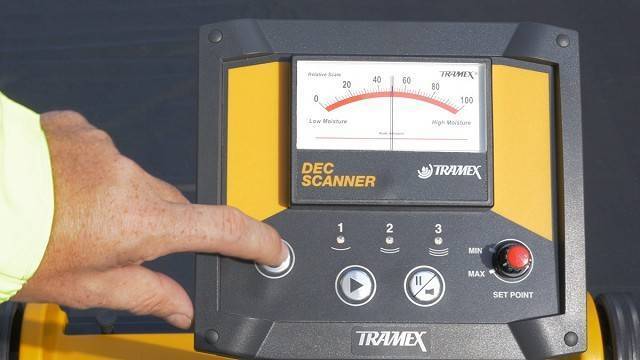
The red LEDs will flash on both the base unit and the control panel to indicate a good connection between the two infrared links.
Three Ranges of Sensitivity
The Dec Scanner has three ranges of sensitivity:
- Range 1 reads to a depth of approximately 1 to 2 inches (30 - 50mm) and is the least sensitive range, providing the most shallow depth readings just below the membrane surface. It is most suitable for single ply and thin roof covering such as PVC, Hypalon and other smooth surfaces where insulation is wet and moisture is close to the surface.
- Range 2, the mid-range, reads to a maximum depth of approximately 3 inches (70 - 80 mm) and is more suitable for 3 and 4 ply (BUR) modified systems and mineral surface felts and other smooth or gravel surfaces where insulation is less wet and moisture is below the surface.
- Range 3 provides the deepest level readings of approximately 6 inches (150 -160mm). This range can be used for thicker insulation and roof coverings. It is also suitable for gravel and stone surfaced roofing.
How to Determine a ‘Relative-Dry’ Area for Your Moisture Survey
Choose the appropriate sensitivity range with the instrument placed over a ‘known dry area’. Then adjust the set-point knob until the needle is just above zero. If a ‘dry area’ is not known, position the instrument over a location which is considered to be dry and adjust the set-point knob so that the needle points to the mid scale of 50. The Dec Scanner detects the moisture content in the roof system while non-destructively rolling over the roof surface. Move the instrument around the roof following directions of lower readings until an area with the lowest readings is found. This should then indicate a ‘relative dry area’. With the Dec Scanner positioned over this ‘relative dry area’, adjust the set-point control knob until the needle is just above zero and proceed with the moisture survey. An identified area of high or low moisture may also be checked with a Tramex CMEX5 and extended insulated resistance pins, by first puncturing the surface of the roofing membrane with the Tramex hole punch. Then, using the hand held resistance probe with 7.8” or 3” insulated pins, insert the pins into the insulation for relative readings at selected depths.
How to do a Roof Moisture Survey to ASTM D7954
To perform a Moisture Survey according to ASTM D7954, it is first necessary to calibrate the equipment on an area of roofing where the surface and subsurface insulation and components are dry, as explained above. A core sample can be taken at this point to evaluate the moisture content, condition and composition of the roofing system. A pin type moisture meter can be used to evaluate relative moisture conditions of core samples immediately after extraction and these readings should be recorded on the report sheet or using the Tramex Meters App. The core samples should be retained for correlation with gravimetric measurements at the verification stage as per ASTM C1616. Aggregates on the roof can be left in place but they should be dry and of uniform thickness. Proceed by moving the Dec Scanner in a continuous and systematic manner over the roof surface in a grid-like pattern.
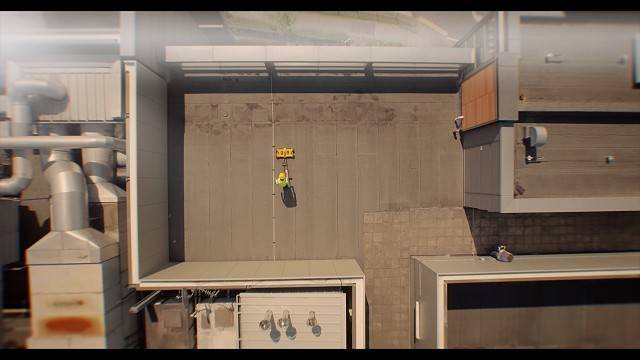
Mark areas of concern directly on the roof surface as well as on a grid roof plan or using the Tramex Meters App. As the survey continues, a moisture profile will build up, indicating areas which require attention. By continuously checking in this way, a complete picture of the roof moisture condition can be obtained quickly. An area of up to 100,000 sqft can be reasonably covered in one day.
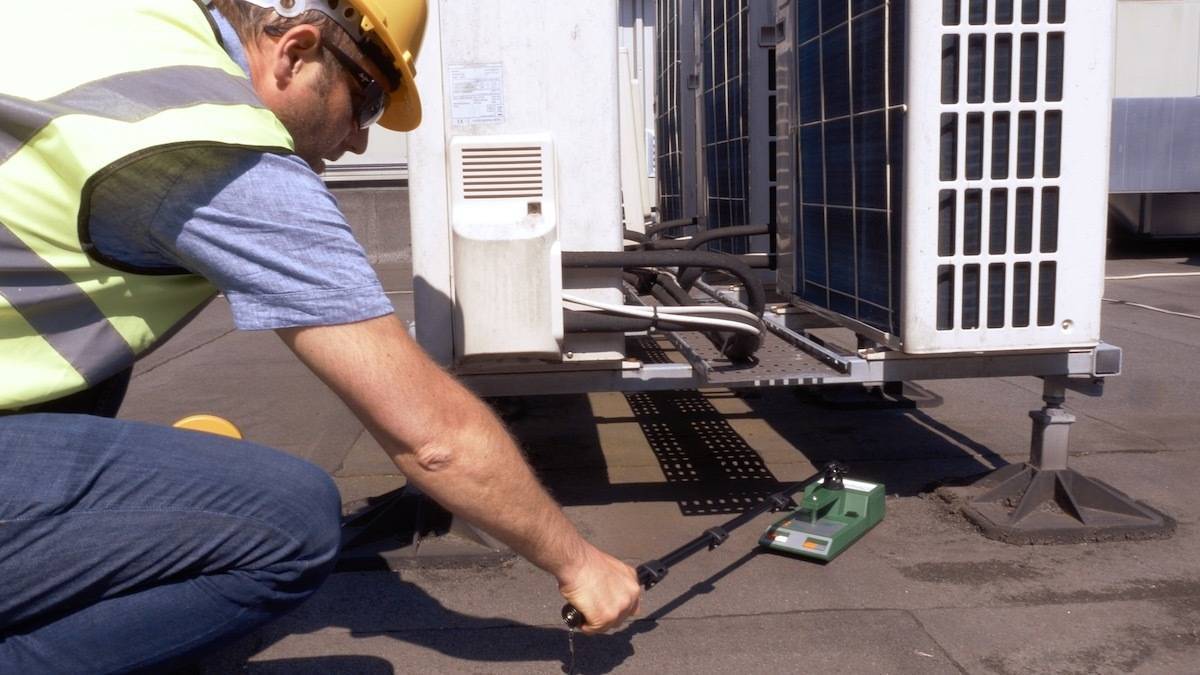
Take additional readings, near penetrations, equipment, curbs and flashings, at edges, as well as other roof areas commonly identified as areas of possible moisture ingress. It is important to also examine the plys of the roofing felt after taking the test cut, as moisture may be present between the plys or within the fibre of the felt. Suspected wet areas should be confirmed by core sampling using gravimetric analysis in accordance with ASTM C1616.
Routine testing and diagnostics with the Tramex Dec Scanner, helps save millions in insurance claims annually, through repairing rather than replacing roofing systems.
Why risk it? Test with Tramex.